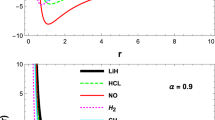Abstract:
The renormalized random phase approximation for hot finite Fermi systems is evaluated with the use of the thermo field dynamics formalism. This approximation treats vibrations of a hot finite Fermi system as harmonic ones but takes into account the Pauli principle in a more proper way than the usual thermal RPA, thus incorporating a new type of correlations in a thermal ground state. To demonstrate advantages of the approximation and to analyze a range of its validity, it is applied to the exactly solvable Lipkin model. A comparison is made with the exact grand canonical ensemble calculations, results of the thermal Hartree – Fock approximation and the thermal random phase approximation. The intrinsic energy of the system, the heat capacity, the average value of the quasispin operator z-projection and the particle number variance are calculated as functions of temperature. On the whole, the thermal renormalized RPA appears to be a better approximation than the other two. Its advantage is especially evident in the vicinity of the phase transition point. It is found that within TRRPA the phase transition occurs at lower temperature than in THFA and TRPA.
Similar content being viewed by others
Author information
Authors and Affiliations
Additional information
Received: 4 January 1999 / Revised version: 10 March 1999
Rights and permissions
About this article
Cite this article
Vdovin, A., Storozhenko, A. Effect of thermal ground state correlations on the statistical properties of the Lipkin model . EPJ A 5, 263–273 (1999). https://doi.org/10.1007/s100500050285
Issue Date:
DOI: https://doi.org/10.1007/s100500050285




